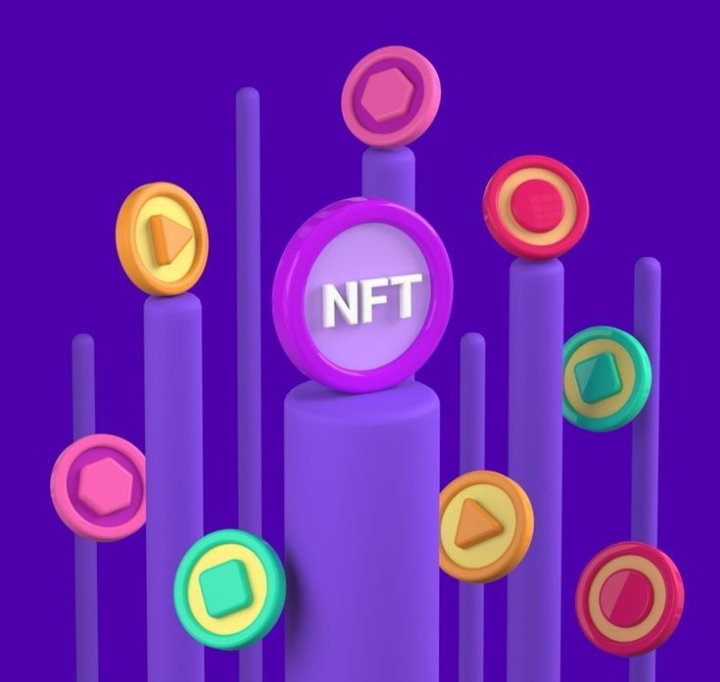Just as NFTs are way beneficial to digital artists, the disadvantages of NFTs also exist. Non-Fungible Tokens which you can also call NFTs are a sudden and prevalent digital wave across the Internet. Since the Internet’s creation, only a few things find their way in with as much force as that of the NFTs. This means the NFTs are leaving quite a footprint in the sand of time. But before we look into the disadvantages of NFTs, we need to understand the logic behind them.
Table of Contents
History of NFTs
To understand the concepts of NFTs, take a step back to the digital evolution of humans. It will also help you understand what the disadvantages of NFTs are all about. About 10 years ago, you probably spent your leisure time chatting with friends, playing sports or even reading a novel. Whereas, you can not give this same account of your leisure time nowadays.

You can’t understand the concept of NFTs without taking a step back to the digital evolution of humans.
We now live in a digital world. The digital world accounts for a fast leap in the evolution of humanity. Ranging from physical interaction with friends to chatting with them on social media. From playing sports or childhood games during our leisure to spending hours on mobile and video games. It is evidence that evolution has made an impact on our spending habits.
Millions of people, who are video game enthusiasts spend an unbelievable amount of time and money on video games and the virtual world in general. Hence, the creation of digital goods with a focus on art arises. A strain on people creating physical goods also occurs.
About 10 years ago, an artist who can create a work of art can easily sell and make money from his piece. Even if you take the picture of the physical good and print it out, the quality and nature can never be as genuine as the original. Along the way, we welcome the era of digital art.
Now, the creation of digital paintings, sounds, beats and lots more are easier and more lucrative. However, every era has its pros and cons. The digital era is also an era of the NFTs. So, while enjoying the benefits, we are left to face the cons of NFTs.
Imagine an artist who spends hours creating a beautiful digital art piece using Krita or the AutoDesk sketchbook pro app from a tablet. After making the final touches, the artist posts his art piece on Instagram. Then the issue arises. The artist loses control over his piece of art. He forgot the fact that anybody can save, screenshot, highlight or even copy his work with no notable differences in quality. Anybody can use and share the art piece as they please. This depreciates the value of the artist’s hard-earned work and ownership rights. NFTs are here to change this.
Read also: Transitioning into Tech in Nigeria: A Complete Guide
Why NFTs Are Indispensable
Using blockchain technology, NFTs can perfectly tell who has the original copy of a digital product. NFTs cannot be exchanged for anything else hence its name, Non-Fungible Tokens. Just like the land is an example of an asset, paper money & bitcoins are examples of Fungible Tokens. This is because you can exchange them for something else of equal value. NFTs cannot! So, when a person says they are buying an NFT, they are transferring the digital ownership of the said piece.

NFTs can tell who has the genuine copy of a digital product using blockchain technology.
There are pros as well as indisputable disadvantages of NFTs. The pros of NFTs range from getting a whole new way to earn as an artist and connecting more with your fans to having an easier and safer form of investment.
However, for every set of pros of NFTs, a set of cons NFTs are not far behind. Below are some of the main disadvantages of NFTs.
5 Evidence-Proven Disadvantages of NFTs
-
Limited rights
Of all the disadvantages of NFTs, the most ridiculous was the limited use and right of your purchased NFT. It is unlike physical paintings where you have full control after purchase. Buying an NFT does not give you copyright over the work. As such, you cannot duplicate the said pieces (e.g, a logo) to make money off it.
All these rights are withheld by the original creator. In short, the owner of a said NFT only owns it in a specific sense as defined by the NFT crypto community which is not whole ownership. This is a little more than bragging rights.
-
Lack of Essence
NFTs start as a means of digital artists getting value for their hard work. But sadly, this isn’t the case anymore. Overambitious and pretentious businesspeople hijack it in a far majority. This causes another rise in the disadvantages of NFTs. To them, this is just a way to make a quick buck. The same energy as a get-quick-rich scheme.

NFTs help digital artists to get value for their hard work.
A person with a basic knowledge of code can set a loop to mass-create a huge number of pixels to form an image. The person can use this same code but with different combinations to mass-produce copies. Such a person sells this as a collection of NFTs at an incredible amount because people feel it is rare and vital. Thus, it gives bragging rights.
The availability of the ability to create NFTs by anyone also has some bizarre consequences, especially in the Nigerian space. You can head on to open sea [a platform for NFT buying and collection]. Then, you will see explicit content of women who in the dumbest way possible are trying to sell pictures of their stripped bodies. This doesn’t in the most remote way possible make sense.
-
Public Figures
The bizarre usage by celebrities is one of the serious cons of NFTs. Twitter is exploding with the NFT trend and celebrities are catching up on it. Celebrities are releasing NFTs in all directions and having fans buy them. Those who buy the really expensive ones get incentives like a to follow back or a chance to meet these celebrities. This may in all nature seem fine. But with the ridiculous prices, process and nature, it is quite easy to see it coming from a place of greed.
Even worse is the use of dead celebrities as a clue to promote NFTs. Sadly, social media accounts of deceased celebrities like “Stan Lee” and “Bob Ross” who had an amazing influence on their fans when they were alive are being used to do this. It will prove sadly effective because of the influence. This is bad seeing the reputation these people had.
Stan Lee was a big fan of charity and even had his foundation during his lifetime. He has been reduced to a person who used to make a few coins with no plan of giving back to the people.
Read also: A Guide to the Metaverse Demystified For Nigerians
-
The environment
A world aspiring to get clean water, keep sea levels low and recycle more is yet hit with the fifth of the disadvantages of NFTs. This is because a good number of NFTs are based on a cryptocurrency called “Ethereum” which is not exactly the best thing on the planet. Why?
To ensure the original nature of virtual goods, Ethereum uses “Proof of work”. This ensures the legitimacy of transactions in the NFT world, by cross-referencing it among millions of computers around the world which uses a lot of energy. Thus, this harms the world. Most especially with the new sustainability goals, we are collectively trying to achieve.
-
Illegal activity
A fifth and final disadvantage of NFTs is the explosion of Illegal activities associated with them. For example, with a famous Nigerian theme, “hero brand” or “the indomitable”. An artist can create art with their concept and sell it as digital art to Indomie enthusiasts for an exorbitant amount. But the artist has no legal right to do so.
Hence, you buying that could have you arrested by Indomie for copyright infringement. This means you might serve a jail term for what you had little knowledge about. The illegal activity shows the disadvantages of NFTs and how the decentralised nature of crypto and cyberspace is.
Read also: Why Metaverse Is the New Frontier in Technology
Conclusion
After reviewing all of the above disadvantages of NFTs, you should have a hint on what it centres on. It is undeniable that the NFT Community is still an ever-growing one with a lot of life and fun alongside it. Also, it is a core part of what is to come in the Metaverse. However, the outcome and limits of this are yet to be seen.
Do you have anything to say about this post? You are free to speak your mind in the comments section. You can also have an audience with Insight.ng via our WhatsApp community as regards NFTs.
Perhaps this post inspires you, kindly follow our Instagram page to keep track of more interesting posts. You can also subscribe to our newsletter. Insight.ng has always got your back. Thanks for your time!
About Author
- Figure Lawrence is a creative thinker, multi niched professional writer, content creator, brand influencer and all round cool guy.
Latest entries
 TechnologyFebruary 13, 20225 Evidence-Proven Disadvantages of NFTs
TechnologyFebruary 13, 20225 Evidence-Proven Disadvantages of NFTs TechnologyFebruary 3, 2022Why Metaverse is the New Frontier in Technology
TechnologyFebruary 3, 2022Why Metaverse is the New Frontier in Technology
 LifestyleDecember 29, 2021How to Have Meaningful Conversations with Nigerians
LifestyleDecember 29, 2021How to Have Meaningful Conversations with Nigerians

